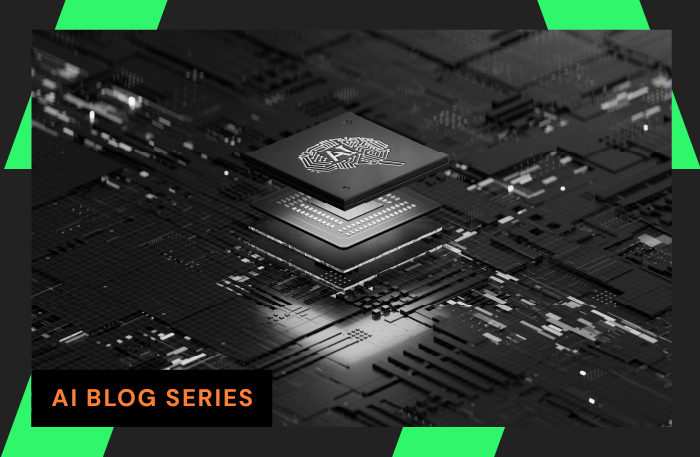Contents
Patchworking several siloed tools together to attempt full visibility can be problematic and disjointed.
To get a full picture of the network that moves application traffic, true end-to-end network visibility is needed.
Let’s investigate the factors that can directly impact application performance, the effects of compromised performance, and what abilities tools must include.
Our solution brief drills down on:
- 3 ways network health can influence application performance
- 5 consequences of suboptimal application performance
- The 3 functions a NetOps team needs from a solution
Don’t jeopardize application performance with limited legacy tools. Unify and correlate your toolset data reporting with LiveAction’s powerful LiveNX monitoring platform.
Application Performance Insight Requires Deep, End-to-End Network Insight
Today’s economy is more technology-driven than ever before. Enterprises must embrace digital transformation to innovate rapidly. This transformation is about the digitization of business models, and digital business models are driven by applications.
Enterprise network operations teams can optimize application performance by implementing a network analytics solution with deep, end-to-end visibility into the network. Such a solution can complement and enhance application performance management solutions that primarily deliver narrow visibility into application infrastructure.
All application transactions traverse the network, and network health and performance can influence application performance in multiple ways.
- Network infrastructure health can affect application connectivity and performance
- Network traffic patterns can introduce inefficiencies that add latency to applications
- Network traffic volume creates bottlenecks, packet drops, and jitter that degrade applications
The Challenge
Application performance management tools offer limited visibility to some silos.
DevOps and application operations teams have their own tools for managing application performance. These tools do not provide a full picture of application performance. They reveal the performance of application components and computing systems. They do not provide visibility into a network that moves application traffic.
When applications are the business, suboptimal application performance is an existential threat.
- Business processes freeze
- Revenue-generating transactions fail
- Users reject or abandon critical applications
- Employee productivity erodes
- Customer satisfaction and retention suffer
The Solution – Network Analytics
Network managers need to modernize their tools because outdated methods for monitoring and optimizing application performance are insufficient for digital enterprises. Network managers need a network operations solution that takes a top-down approach to application performance.
A network analytics solution must combine application context with network infrastructure metrics and traffic. Any changes made to the network to optimize application performance must also be done through NPM solutions within an application context.
A NetOps team needs a solution that performs three basic functions:
- Application Visibility: Application Visibility Network traffic data holds the key to application visibility. Network performance management tools must be able to read and analyze data from network flow record technology. The key is to find ways to collect this data across a network to gain end-to-end visibility into application traffic. This visibility should extend from the data center to a corporate LAN and WAN. It should also include visibility into the public cloud.
- Application Performance Assessment: Application performance assessment requires deep insight into multiple classes of network data. Network flows with IPFIX/NetFlow v9 extensions are helpful to application performance assessment because they can carry reports specific to application
performance, depending on the extension fields supported by network infrastructure vendors. - Network Optimization: AIOps-driven technology can connect insights with recommended actions. Machine learning, big data, and predictive analytics technology can reveal how the network is impacting application performance and how changes can resolve potential problems. Automated capacity planning is a popular use case for AIOps-driven NPM technology. These solutions can provide clear visualization into potential capacity issues that will impact application performance.
With application performance now paramount, legacy approaches to network operations no longer support your mission. You cannot optimize application performance simply by tracking packet loss, latency, and jitter, and application teams cannot rely on their application performance management tools alone. The network team must empower itself with deep application intelligence to support digitization.
Quick Facts
What are the greatest challenges to success for network operations in your organization?
- 33% of enterprises say application performance optimization drives their network monitoring and management strategies
- Lack of end-to-end network visibility
- Shortage of skilled personnel
- Fragmented network tools
- Lack of usage policy/enforcement
Enterprises need an end-to-end network analytics platform that provides:
- Application visibility
- Assesses application performance across the network
- Facilitates optimization of the network for maximum application performance
Download Executive Brief
Application Performance Insight Requires Deep, End-to-End Network Insight
About LiveAction®
LiveAction provides end-to-end visibility of network and application performance from a single pane of glass. We provide enterprises with confidence that the network is meeting business objectives, full network visibility for better decisions, and reduced cost to operate the network.




